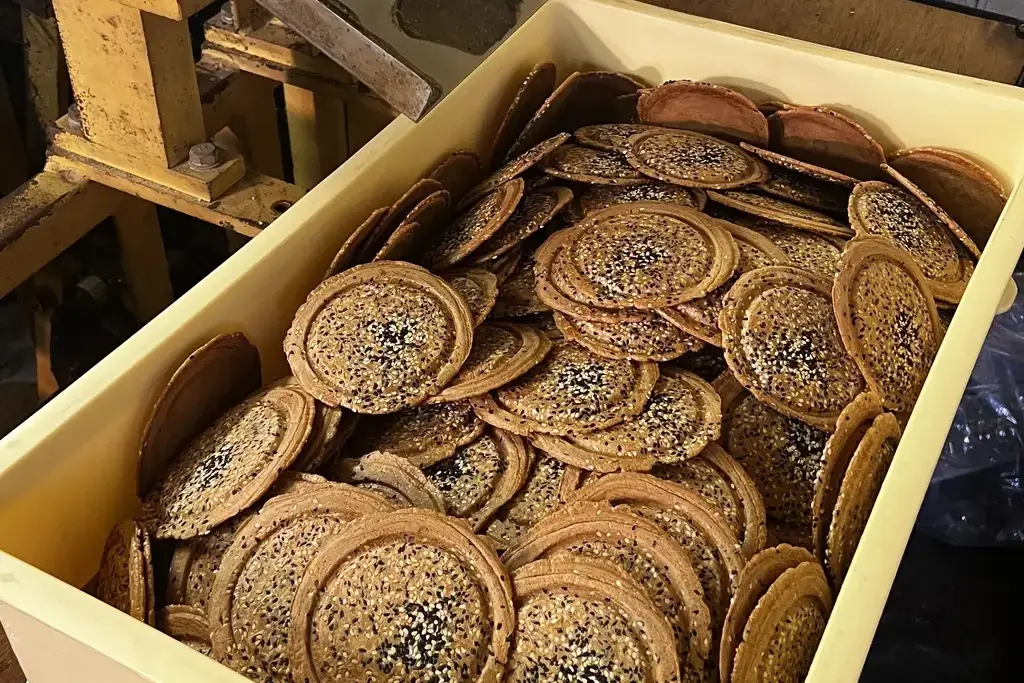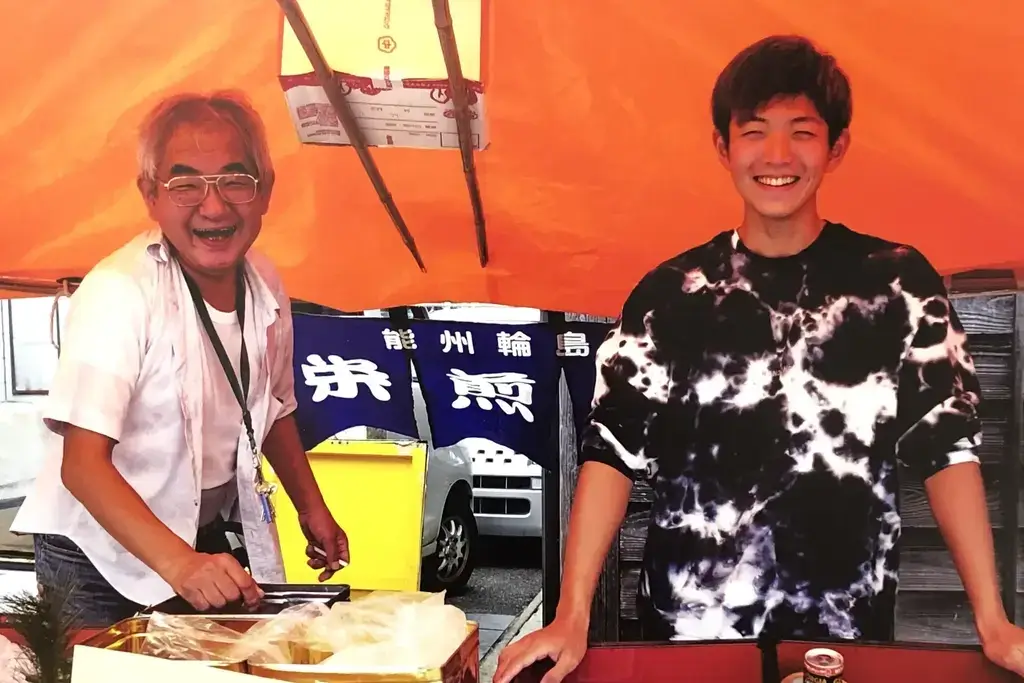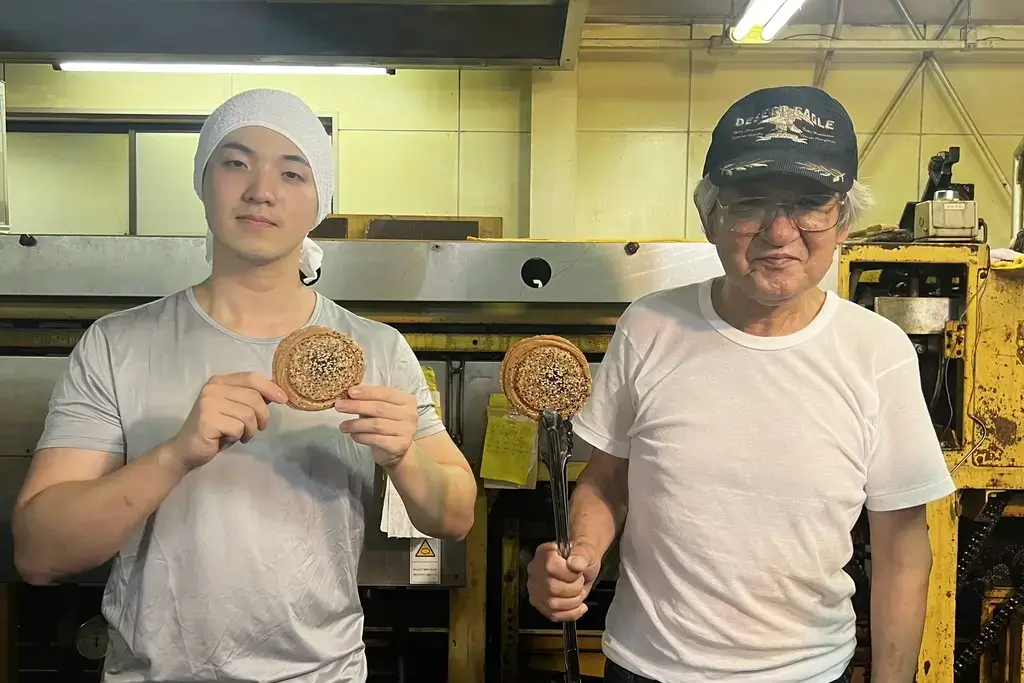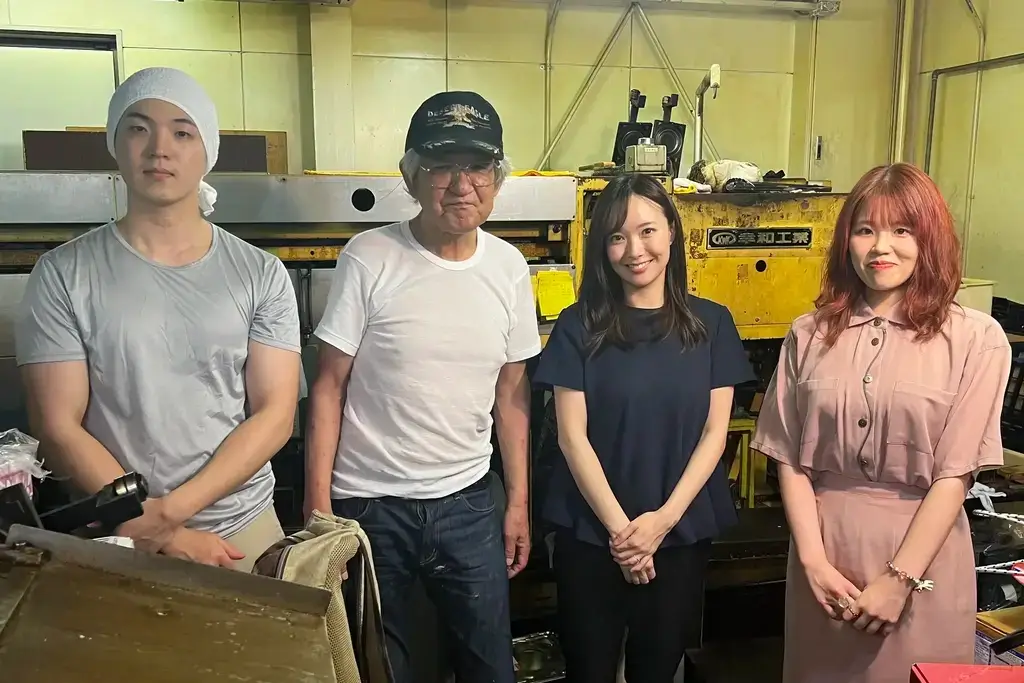Japan has many fantastic treats and snacks, from sweet and yummy to savory and filling. Rice, one of Japan’s most important crops, has been used for millennia to create many of its most famous snacks. One of the best types of rice crackers is white sesame senbei.
These crackers can come in various shapes, sizes, and flavors, making them an ideal snack anytime in all the places to enjoy senbei in Japan. The local and long-running bakery known as Eisendo is the absolute best place. If your travels to Japan take you to one of the country’s most famous bakeries, trying their senbei is a must!
Table of Contents
ToggleWhat is sesame senbei?
Senbei, classic Japanese snacks made from rice flour, often use other flours like wheat and starch, but rice remains the most common choice. Chefs turn glutinous rice into dough and refrigerate it for an extended period. Once the dough chills sufficiently, they cut it into any desired shape. Then, they fry or bake the rice cakes until they become nice and crisp.
Cooks usually brush the senbei with flavorings such as octopus, seaweed, shrimp, or any other preferred flavor. Though sweet versions are also available, these crackers serve as salty and savory snacks. Sesame senbei feature cakes topped with white sesame seeds, which impart a unique flavor to the cakes.
How does Eisendo make it?
Eisendo, one of Japan’s most celebrated bakeries and confectionery shops, prides itself on adhering to the most traditional cooking methods for its white sesame senbei. Originally founded in 1950 by Kazue Nakamori as “Nakamori Senbei Shop”, Eisendo is currently run by Kazue and his son Osamu.

They only use ingredients “needed by the body,” meaning that it does not use artificial ingredients or preservatives. Its most popular variety is Asaichi Senbei Kanmi, a sweet version of the cake made with potato flour instead of the usual rice.
What makes it unique from other senbei?
Eisendo’s commitment to only using fresh and organic ingredients and the unique decision to use potato flour makes them unique from other more typical senbei. Asaichi Senbei Kanmi is Eisendo’s best-selling variety, alongside their Ishiru Senbei, which are made with local Noto Ishiru fish sauce. For those seeking one of the most memorable iterations of this classic snack, Eisendo is the place to go.
Would you like to enjoy Eisendo’s white sesame senbei? Check out Sakuraco! In this month’s box, we have artisanal snacks from all across Ishikawa Prefecture to support the area in its recovery from the Noto earthquake.
How was Eisendo affected by the earthquake, and how are they recovering?
Unfortunately, on January 1st of this year, Ishikawa Prefecture suffered a massive and terrible earthquake. The natural disaster, categorized as a magnitude 7.6 earthquake, destroyed countless buildings, homes, and roads throughout many towns within Ishikawa Prefecture. The quake occurred northeast of Suzu, a town on the Noto Peninsula.
One of the towns affected by the quake was Wajima, where Eisendo is located. Destruction was widespread, with Wajima’s famous morning market suffering considerable damage. Many months would pass before aid was administered to the towns in Ishikawa Prefecture, and the relief efforts are still underway today.

A very damaging side effect of the quake was the closure of the Wajima Morning Market and the subsequent exodus of many citizens from the area. Young people, in particular, left their town, which made business extremely difficult for many local shops and stores. Eisendo is still open today, with all its classic offerings available. It has been a very difficult and scary time for Eisendo and everyone affected by the earthquake. Showing support for the local shops is the best way to ensure they can stick around for many more years.
However, the damage to the area did not stop Sakuraco CEO Ayumi Chikamoto from visiting the market herself. As Sakuraco prides itself on providing the highest quality content to its fans and subscribers for everything related to Japanese culture, it was only fitting for her to visit the market and lend her support. Sakuraco wouldn’t exist without the local shops, markets, and people who help make Japan a culturally wonderful place. By supporting Sakuraco, you are also helping lend support to the local people who need assistance. Spread the word and help keep Japan the fantastic place that it is!
Why is Eisendo important?
Eisendo is important as a bakery and confectionery shop because it is a part of Japanese history. Culture and tradition are extremely important in Japan, with everything from attire to religion to festival-going, all weaving together as a giant tapestry of ancient Japanese culture. Eisendo is essential as it strives to keep the traditional methods of producing senbei alive today.

Every cracker you enjoy helps keep the long tradition of snack-making alive and well. Have you had white sesame senbei before? Did you go to Eisendo for them? Please let us know in the comments below! We would love to hear how you enjoyed such a classic Japanese snack!











